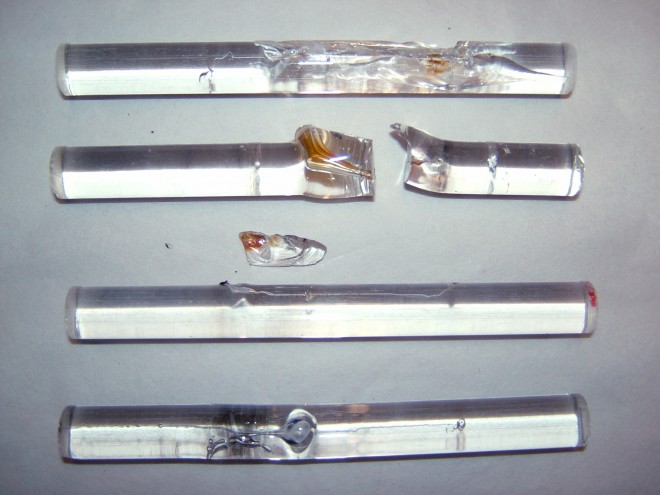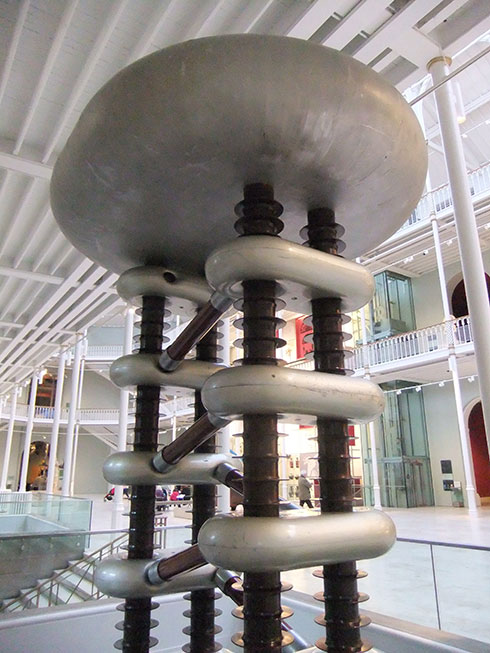I am often asked what my favourite object in the National Museums Scotland collections is – which I find impossible to answer. Can I have a couple of hundred favourites?
That said, two of the many which I have a fondness for are two blocks of Perspex in the particle physics collections. I like them because they are beautiful, old and illustrate that scientists play with their kit in between serious research.

They are known by many different names including electron trees, frozen lightening and Lichtenberg figures. This branching, treelike pattern is formed by an electrical discharge. They are sometimes produced naturally when lightning strikes the ground or a person. They can also be made artificially with a static electricity machine or particle accelerator. The first man-made ones were created by Georg Lichtenberg in the 1770s in Germany.

These Perspex ones are, I am assured, quite easy to make – but only if you have a decent particle accelerator which isn’t being used for its intended purpose. The high voltage is needed to burn though the insulator, like these glass rods which were burnt out when unsuccessfully insulating part of a small particle accelerator.

The polished block is placed into the powerful electron beam and charged up, at two million electron volts in this case. At this point the block still appears clear and the electrons are invisibly trapped within it. The block is then discharged by hitting one side with a point and the excess electrons burn their characteristic pattern as they flow to the discharge point. The one million volt Cockcroft Walton generator from the University of Edinburgh now in our Grand Gallery at the National Museum of Scotland would probably do the job… but we don’t have it set up to work.

These novelties have been produced in science labs for decades, but not so often documented or written about in their early history. In 1962 the making of a glass one was featured on the cover of Science magazine and in 1958 the first paper describing and studying these blocks in plexiglass was published by Bernhard Gross in Rio de Janeiro. However, we have had ours since 1956, which makes them the oldest 3D examples I know of in any museum or collection.